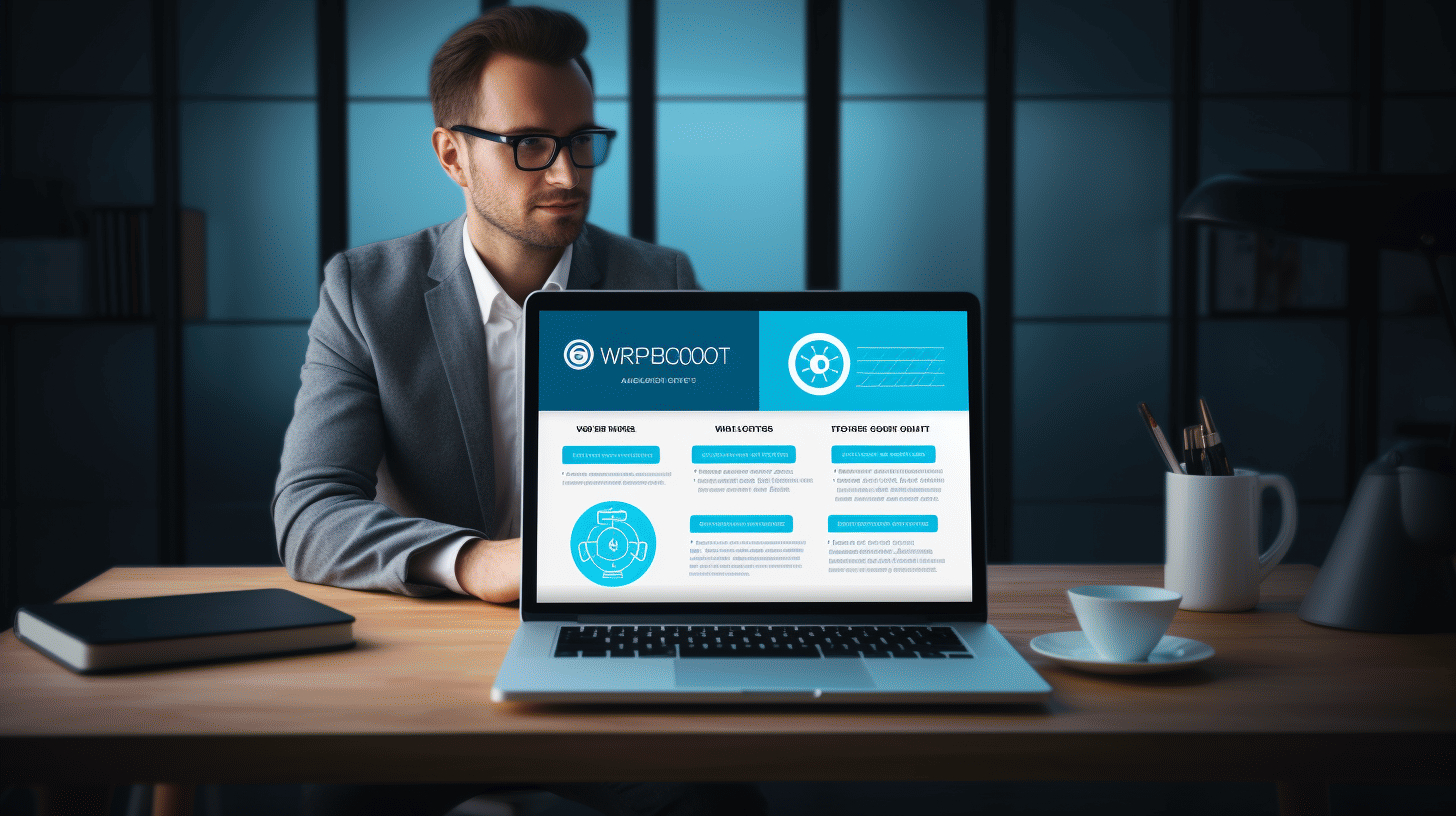在当今的数字时代,拥有一个性能良好的网站对于任何希望在网上产生影响的企业或个人来说都至关重要。在创建和维护网站方面,WordPress 已成为最受欢迎的平台之一。其用户友好的界面和广泛的插件使其成为许多网站管理员的首选。然而,仅仅拥有一个 WordPress 网站是不够的。为了真正释放其潜力并确保无缝的用户体验,网站所有者必须有效地优化他们的网站。
网站优化包括有助于提高性能、用户参与度和搜索引擎可见性的各种因素。从托管和主题选择到图像和插件优化,每个元素都对确保您的网站以最佳状态运行起着至关重要的作用。通过遵循 WordPress 优化的最佳实践,您可以为访问者提供快速、高效且视觉上吸引人的体验,让他们再次光临。
在本文中,我们将探讨优化 WordPress 网站的关键最佳实践。我们将深入探讨升级 PHP 版本、启用 GZIP 压缩、优化数据库和跟踪网站速度等主题。我们还将讨论使用 SEO 插件、图像优化技术以及在选择主题和框架时做出深思熟虑的选择的重要性。通过实施这些技术,您将能够充分发挥 WordPress 网站的潜力。
因此,无论您是企业主、博主还是自由职业者,请准备好将您的 WordPress 网站提升到新的水平。让我们深入研究并发现最佳实践,这些最佳实践将帮助您优化网站的性能、增强用户体验并提高您的搜索引擎排名。
优化网站性能
在当今快节奏的数字环境中,拥有一个快速且优化的网站对于吸引和留住访客至关重要。加载缓慢的网站不仅会让用户感到沮丧,还会对搜索引擎排名产生负面影响。值得庆幸的是,您可以采用多种策略来提高网站的性能并创造流畅的用户体验。让我们来探索一些最有效的策略:
使用良好的托管服务
选择可靠的托管服务是打造高性能网站的基础。信誉良好的托管服务提供商将确保您的网站即使在流量高峰期间也能保持可访问性和响应性。投资优质托管服务可以显著提高网站性能和速度,让您的用户感到满意并保持参与度。
选择高品质的 WordPress 主题
您选择的 WordPress 主题在网站性能优化中起着重要作用。选择精心构建和优化的主题可以对网站加载速度产生巨大影响。寻找具有干净代码、轻量级且遵循性能最佳实践的主题。高质量的主题将帮助您的网站更快地加载并为您的访问者提供无缝的浏览体验。
优化图像
图片对于增强网站的视觉吸引力至关重要,但较大的文件大小会严重影响加载时间。通过优化图片并减小其文件大小,您可以显著提高网站速度。使用专为图片优化设计的压缩工具或 WordPress 插件。这将确保您的图片在网站上快速加载的同时保持其质量。
实现缓存
缓存是一种存储网站页面临时副本的技术。通过实施缓存,您可以通过提供这些缓存副本来提高加载速度,而不是从头开始生成页面。利用 WordPress 缓存插件或探索托管服务提供商提供的服务器端缓存选项。缓存可有效减少服务器负载,从而缩短访问者的加载时间。
停用不必要的插件
虽然插件可以扩展网站的功能,但过多的活跃插件会降低网站速度。每个插件都需要额外的服务器资源才能运行,这会导致加载时间增加。定期评估您的活跃插件并停用任何不必要或未使用的插件。这个简单的步骤可以帮助防止网站速度变慢并简化网站的性能。
定期清除页面缓存
如果您使用缓存插件或服务器端缓存,定期清除页面缓存非常重要。这可确保您对网站所做的任何更改都能立即反映出来,并确保访问者始终看到您网站的最新版本。定期清除页面缓存对于保持最佳性能和提供一致的用户体验至关重要。
减少 HTTP 请求
您网站上的每个元素(包括图片、CSS 和 JavaScript 文件)都需要向服务器发出 HTTP 请求。您的网站发出的请求越多,加载所需的时间就越长。通过减少 HTTP 请求的数量,您可以提高网站的速度。尽可能合并文件、缩小代码并利用浏览器缓存来减少请求数量并提高网站的性能。
避免重定向
重定向对于管理过时的 URL 或将用户重定向到正确的页面非常有用。但是,过多的重定向会降低网站速度,因为每次重定向都需要额外的 HTTP 请求。尽量减少使用重定向,并尽可能选择直接链接。保持网站的 URL 结构简单明了有助于提高加载速度并改善用户体验。
最小化 HTML
压缩网站的 HTML 代码包括删除不必要的空格、注释和格式以减小文件大小。较小的 HTML 文件加载速度更快,有助于提高网站的整体性能。考虑使用自动压缩 HTML 代码的工具或插件来优化网站的加载速度。
优先考虑可见内容
当用户访问您的网站时,无需滚动即可看到的页面内容应首先加载。这有助于营造网站加载速度快的感觉,并在加载其他元素时保持访问者的参与度。可以通过优化关键渲染路径并利用图像延迟加载和非关键脚本延迟加载等技术来实现可见内容的优先加载。通过这样做,您可以为用户提供无缝流畅的体验。
考虑使用轻量级 WordPress 主题
最后,请考虑使用轻量级 WordPress 主题,以防止您的网站出现不必要的臃肿。轻量级主题专注于基本功能,避免过多的脚本或样式,因为这些可能会降低您网站的速度。寻找优先考虑性能优化、具有简约设计并为您的网站功能提供必要灵活性的主题。选择轻量级 WordPress 主题有助于缩短加载时间并改善用户体验。
通过实施这些最佳实践和技术,您可以优化网站的速度和性能,确保您的访问者拥有愉快的浏览体验。请记住,快速加载的网站不仅对您的用户有益,而且还能提高您的搜索引擎排名和整体在线形象。
要了解有关 WordPress 速度优化技术的更多信息,请查看 10 个 WordPress 速度优化.
升级 PHP 版本
如果您正在运行 WordPress 网站,您可能已经听说过保持 PHP 版本更新的重要性。升级到最新的 PHP 版本不仅可以确保网站的安全性和稳定性,还可以提供各种性能改进。在本节中,我们将探讨为什么升级 PHP 版本至关重要以及它如何使您的 WordPress 网站受益。
升级到最新的 PHP 版本
更新 PHP 版本就像是给您的网站提供急需的提升。每次发布新版本,PHP 都会在速度、安全性和功能方面带来显著的改进。以下是您应该考虑升级到最新 PHP 版本的几个原因:
- 提高性能:最新的 PHP 版本进行了性能优化,可以显著加快您的 WordPress 网站速度。从更快的请求处理到减少内存使用,这些改进有助于提供更流畅、响应更快的用户体验。
- 增强安全性:PHP 开发人员不断努力修复安全漏洞并增强语言的安全功能。通过升级到最新版本,您可以确保您的网站免受已知漏洞的侵害并可以访问最新的安全补丁。
- 新特性和功能:升级 PHP 引入了新功能和增强功能,这些功能和增强功能对您的网站大有裨益。这些更新提供了更广泛的功能,让您能够充分利用 Web 开发方面的最新进展。
在升级 PHP 版本之前,务必检查您的 WordPress 主题和插件是否与新版本兼容。某些较旧的主题和插件可能需要更新才能与最新的 PHP 版本无缝协作。运行兼容性测试或联系主题/插件开发人员可以帮助确保顺利过渡。
受益于性能改进
升级到最新 PHP 版本的一个显著优势是它为您的 WordPress 网站带来的性能改进。更快、更优化的网站不仅可以增强用户体验,还可以提供其他一些好处:
- 改进搜索引擎优化 (SEO):页面加载速度是搜索引擎排名的关键因素。通过升级 PHP 版本,您可以提高网站的性能,从而缩短加载时间并可能提高搜索引擎排名。
- 更好的用户参与度:加载缓慢的网站会让访问者感到沮丧,并且经常导致高跳出率。通过升级到最新的 PHP 版本,您可以提供无缝的浏览体验,让用户与您的内容保持互动,并降低他们离开您网站的可能性。
- 提高转化率:更快的加载时间和更好的性能会直接影响您的转化率。如果网站加载速度快、运行流畅且用户体验流畅,那么用户更有可能转化为客户或采取所需的行动。
- 可扩展性和未来增长:升级 PHP 版本不仅对您当前的网站有益,而且还能为未来的可扩展性和增长做好准备。通过改进性能和提高效率,您的网站可以处理更高的流量负载并适应未来的扩展。
通过升级 PHP 版本,您可以解锁这些性能改进,并让您的 WordPress 网站获得成功。因此,请花点时间检查您当前的 PHP 版本并进行必要的更新,以确保您运行的是最新版本。
附加信息: 升级到最新的 PHP 版本可以提高您的 WordPress 网站的性能。
启用 GZIP 压缩
想象一下访问一个需要很长时间才能加载的网站。很令人沮丧,对吧?缓慢的网站加载速度不仅让用户感到恼火,还会对搜索引擎排名产生负面影响。幸运的是,有一种名为 GZIP 压缩的强大工具可以帮助缓解此问题并提高网站性能。
那么,GZIP 压缩到底是什么?简单来说,GZIP 压缩是一种减少从 Web 服务器发送到浏览器的文件大小的方法。它的工作原理是在将文件(例如 HTML、CSS 和 JavaScript)发送到用户浏览器之前对其进行压缩。这种压缩技术可以显著减小文件大小,从而缩短下载时间。
在您的网站上启用 GZIP 压缩是一种相对简单且有效的提高加载速度和增强用户体验的方法。以下是一些帮助您启用 GZIP 压缩的步骤:
- 检查 GZIP 压缩是否已启用:在继续启用 GZIP 压缩之前,最好先检查一下您的网站是否已启用该功能。您可以使用在线工具或浏览器扩展来分析 HTTP 标头,以确定是否已启用 GZIP 压缩。如果已启用,那太好了!如果没有,别担心,我们会帮您解决。
- 在您的 Web 服务器上配置 GZIP 压缩:启用 GZIP 压缩需要修改服务器配置。配置 GZIP 压缩的具体步骤取决于您使用的服务器类型。以下是如何在某些流行的 Web 服务器上启用 GZIP 压缩的一般概述:
阿帕奇
通过将以下行添加到您的 .htaccess file:
AddOutputFilterByType DEFLATE 文本/html 文本/纯文本/xml 文本/css 文本/javascript 应用程序/javascript 应用程序/x-javascript
NGINX
将以下几行添加到 nginx.conf 文件中,该文件通常位于 /etc/nginx/ 目录:
gzip 开启;gzip_types 文本/html 文本/纯文本/xml 文本/css 文本/javascript 应用程序/javascript 应用程序/x-javascript;
- 测试 GZIP 压缩:启用 GZIP 压缩后,测试它是否正常工作至关重要。您可以使用各种在线工具或浏览器扩展来检查您的网站是否正确启用了 GZIP 压缩。这些工具会分析 HTTP 响应标头并提供有关是否正在使用 GZIP 压缩的详细信息。
通过启用 GZIP 压缩,您可以显著减少 Web 资源的文件大小,从而缩短网站访问者的加载时间。请记住,提高网站性能不仅有利于用户体验,还可以对您的搜索引擎排名产生积极影响。
因此,继续在您的网站上启用 GZIP 压缩,为您的用户提供无缝的浏览体验并提高您网站的加载速度!
数据库优化
优化和清理数据库
定期优化和清理数据库有助于保持网站的最佳性能。当您的网站依赖数据库来存储和检索数据时,确保数据库高效运行至关重要。通过组织、优化和清理数据库,您可以提高网站速度、增强用户体验,甚至提高搜索引擎排名。
为什么数据库优化很重要?
未正确优化的数据库可能会降低您的网站速度并导致各种问题,包括:
- 加载时间缓慢:臃肿且杂乱的数据库会增加网站加载时间。这会让您的用户感到沮丧,并让他们不愿意继续留在您的网站上。
- 用户体验差:当网站性能下降时,访问者更有可能离开并寻找更快的替代方案。优化数据库可改善整体用户体验并保持他们的参与度。
- 搜索引擎排名:搜索引擎在确定搜索排名时会考虑网站性能。由于数据库未优化而导致的网站速度缓慢可能会对您的搜索引擎优化工作产生负面影响。
如何优化和清理数据库
以下是一些帮助您优化和清理数据库以提高网站性能的重要提示:
- 删除不必要的数据:识别并删除任何不必要的数据,例如未使用的插件、主题或不活跃的用户帐户。这有助于减少数据库的大小并提高其效率。
- 定期更新数据库:确保您使用的是最新版本的数据库管理软件。定期更新通常包括性能改进和错误修复。
- 优化数据库表:优化数据库表以消除碎片并优化存储。这可以使用 SQL 查询手动完成,也可以通过专为数据库优化设计的插件或工具完成。
- 启用缓存:使用缓存技术来减少数据库的负载。缓存将经常访问的数据存储在临时存储中,从而减少数据库查询的需求并提高整体性能。
- 限制数据库调用:通过优化代码,尽量减少网站进行的数据库查询次数。避免不必要的数据库调用,并优化查询以提高效率。
通过遵循这些提示,您可以确保数据库得到优化、清洁并发挥最佳功能。定期执行这些优化任务将有助于保持最佳网站性能并为您的用户提供无缝体验。
请记住,优化良好的数据库是高性能网站的支柱。花时间定期优化和清理数据库,您将获得网站速度、用户体验和搜索引擎排名提高的好处。
跟踪网站速度
跟踪网站速度是任何网站所有者或开发人员的必备做法。在当今快节奏的数字世界中,用户对加载缓慢的网站几乎没有耐心。加载时间缓慢会导致访问者感到沮丧、跳出率上升,并最终导致失去商机。因此,监控和优化网站速度以提供无缝的用户体验至关重要。
以下是跟踪网站速度很重要的几个原因:
- 确定需要改进的领域:通过定期监控网站速度,您可以识别导致延迟或瓶颈的任何区域。这可能包括大图像、过多的服务器请求或需要优化的臃肿代码。了解是什么导致网站速度变慢,可以让您采取有针对性的措施来提高其性能。
- 确保快速的用户体验:用户体验是吸引访客并鼓励他们进一步探索您的网站的关键因素。如果您的网页加载时间过长,用户很可能会放弃该网站并转而浏览其他地方。通过跟踪网站速度,您可以确保网页快速加载,创造积极的用户体验并提高转化的可能性。
- 提高搜索引擎排名:网站速度是搜索引擎在确定排名时考虑的因素之一。加载缓慢的网站会对您的搜索引擎优化 (SEO) 工作产生负面影响,并导致搜索引擎结果页面的可见度降低。通过跟踪和提高网站速度,您可以提高排名和吸引更多自然流量的机会。
- 保持竞争优势:在当今竞争激烈的数字环境中,每一秒都至关重要。用户已经开始期待快速、响应迅速的网站,而您的竞争对手可能正在努力提供最佳的用户体验。通过跟踪您的网站速度并进行优化,您可以保持领先于竞争对手,并为您的用户提供更好的体验。
随着技术、用户期望和网络标准的不断发展,监控和优化网站速度是一个持续的过程。通过利用工具和技术来跟踪网站速度,您可以确保网站保持快速、高效和用户友好。
请记住,快速的网站不仅可以改善用户体验,还可以提高搜索引擎排名和转化率。请密切关注网站速度,确定需要改进的地方,并实施优化,以提供最佳的用户体验。
使用 SEO 插件
在当今的数字时代,拥有强大的在线影响力对于任何网站的成功都至关重要。提高知名度和为 WordPress 网站带来自然流量的最有效方法之一是实施 SEO 策略。还有什么比使用 SEO 插件更好的方法来优化您的网站以适应搜索引擎呢?
使用特定于 SEO 的插件
在针对搜索引擎优化您的网站时,使用 SEO 专用插件可以带来巨大的不同。这些插件专门用于增强 WordPress 网站的 SEO 性能,使搜索引擎更容易抓取和索引您的内容。
不确定选择哪个插件?好吧,一个广受欢迎的选项是 WordPress 网站的 SEO 插件。这个强大的工具提供了一套全面的功能,可以帮助您掌握 WordPress SEO 的艺术。让我们来看看使用 SEO 插件的一些好处:
- 关键词优化: SEO 插件可让您轻松优化与目标受众相关的关键字和关键短语的内容。这有助于搜索引擎了解您的内容背景,并在搜索结果中将其排名更高。
- 标题和元标签优化: 通过使用 SEO 插件,您可以轻松自定义网站的标题标签、元描述和其他关键元标签。这些元素对于让您的网站受到搜索引擎和用户的关注起着重要作用。
- XML站点地图创建: SEO 插件简化了为您的网站创建 XML 站点地图的过程。此站点地图充当搜索引擎的路线图,告知他们您网站内容的结构和组织。这反过来又有助于搜索引擎更有效地索引您的网页。
- 社交媒体整合: 许多 SEO 插件提供社交媒体集成功能,让您可以优化内容以进行社交分享。这可以帮助提高您的网站在各种社交媒体平台上的知名度,从而为您的网站带来更多流量。
使用 SEO 插件可以优化您的 WordPress 网站以适应搜索引擎并提高排名。因此,不要低估这些便捷工具在您寻求在线成功过程中的威力。利用它们的功能,让您的网站在搜索引擎排名中飙升至新高!
图像优化
图片在增强网站的视觉吸引力方面起着至关重要的作用。然而,优化图片以确保它们不会降低网站的性能也很重要。实现这一点的方法之一是调整图片的大小并进行优化。
在图像优化方面,需要牢记一些关键原则。通过遵循这些准则,您可以在视觉质量和网站性能之间取得平衡。在本节中,我们将讨论调整图像大小和优化图像的好处以及如何有效地进行。
调整图像大小和优化图像
在提高网站性能方面,调整图像大小和优化图像是密不可分的。原因如下:
- 减小文件大小: 调整图像大小有助于显著减小其文件大小。通过减小图像尺寸,您还可以减少用户访问您的网站时需要加载的数据量。这反过来又可以缩短网页的加载时间。
- 提高页面加载速度: 优化图像可确保图像在不影响质量的情况下得到压缩。这意味着图像文件的整体大小会减小,从而加快加载速度。更快的加载时间可增强用户体验,并降低访问者因页面速度慢而离开您网站的风险。
- 更好的SEO性能: 搜索引擎在确定网站排名时会考虑网站的加载速度。通过优化图片,您可以缩短加载时间,从而提高 SEO 性能。这可能会提高网站的可见性并为您的网站带来更多自然流量。
优化图片并不一定是一个复杂的过程。有多种工具和技术可以帮助简化任务。以下是一些入门提示:
- 选择正确的文件格式: 为图像选择合适的文件格式会对文件大小产生很大影响。JPEG 通常用于照片,而 PNG 更适合颜色较少且背景透明的图形。
- 压缩: 使用图像压缩工具或插件可以压缩图像而不会造成明显的质量损失。这可以减小文件大小并缩短加载时间。
- 图片尺寸: 将图片大小调整为网站布局所需的尺寸。可以使用图片编辑工具或插件来完成。
- 延迟加载: 实施延迟加载,这是一种仅在图像即将进入视图时才加载的技术。这可以减少初始页面加载时间并提高整体性能。
通过遵循这些最佳做法,您可以确保您的图片在视觉吸引力和网站性能方面都得到优化。请记住,加载速度快且提供引人入胜的视觉体验的网站更有可能吸引和留住访客。
插件优化
在 WordPress 的世界里,插件就像是一些小扩展,可以帮助增强网站的功能。它们可以添加令人兴奋的功能、优化性能,并让您作为网站所有者的生活更加轻松。然而,在使用插件时,重要的是要取得适当的平衡。虽然插件非常有用,但插件太多会导致插件臃肿和加载时间变慢,最终会对网站的性能产生负面影响。
限制插件数量
插件优化的关键方面之一是限制您在网站上安装的插件数量。原因如下:
- 性能优化:每个插件都会增加一层额外的代码,这会降低您网站的加载速度。插件越多,发生冲突、冗余代码和性能问题的可能性就越大。
- 安全问题:虽然 WordPress 插件经过了严格的测试,但需要注意的是,它们是由不同开发人员创建的,他们的专业水平也各不相同。插件过多会增加网站的攻击面,因为跟踪更新和漏洞会变得更加困难。
- 维护和兼容性:管理大量插件可能非常耗时。定期更新插件、确保与最新版本的 WordPress 兼容以及解决可能出现的任何冲突至关重要。这可能会变得非常繁重,可能需要技术专业知识。
为了避免这些潜在的陷阱,最好定期检查已安装的插件并问自己:
- 我真的需要这个插件吗?
- 有没有不需要插件的替代解决方案?
- 我可以使用更少的插件来实现相同的功能吗?
通过减少网站上的插件数量,您可以简化性能、提高安全性并减轻整体维护负担。
“插件太多可能会导致插件膨胀和加载时间变慢,从而对您网站的性能产生负面影响。”
请记住,一切都在于找到正确的平衡。明智地选择插件,专注于那些真正能为您的网站增加价值的插件,避免不必要的插件。定期检查您安装的插件,并确保保持最新版本。通过优化插件,您可以最大限度地提高 WordPress 网站的性能和安全性。
主题和框架选择
在构建 WordPress 网站时,选择正确的主题或框架对于顺利、高效的网站设计过程至关重要。有很多可用的选项,但选择轻量级的主题或框架可以带来显着的优势。它不仅可以增强用户体验,还可以提高网站的整体性能。
使用轻量级主题或框架可以加快 WordPress 网站的页面加载速度。这一点至关重要,因为加载缓慢的网站会导致高跳出率和访客不满意。此外,像 Google 这样的搜索引擎会优先考虑加载速度快的网站,因此使用轻量级主题或框架也可以对您网站的 SEO 产生积极影响。
以下是使用轻量级主题或框架对您的 WordPress 网站有益的一些原因:
- 性能改进: 轻量级主题和框架旨在最大程度地减少所包含的代码量。这意味着您的网站性能将得到优化,从而缩短加载时间并提高响应能力。
- 简化定制: 轻量级主题和框架通常采用简洁、简约的设计。这些设计为自定义提供了坚实的基础,让您可以轻松调整网站的外观以符合您的品牌形象。
- 增强的安全性: 轻量级主题和框架通常优先考虑安全措施,这有助于保护您的网站免受潜在漏洞的侵害。定期更新和注重安全编码实践有助于为您的网站提供更安全的环境。
- 减少混乱: 轻量级主题或框架不包含不必要的特性和功能。这意味着您的网站将保持整洁,从而实现更轻松的导航和更愉快的用户体验。
了解有关 WordPress 主题和框架的更多信息的一个很好的资源是全面的 WordPress 教程主题。本指南提供了有关如何为您的 WordPress 网站选择、自定义和优化主题的深入信息。
因此,无论您是开始新的 WordPress 网站还是改造现有网站,请考虑选择轻量级主题或框架。这样,您将为快速、可自定义、安全且用户友好的网站奠定坚实的基础。
结论
总之,优化您的 WordPress 网站对于充分发挥其潜力并提供无缝的用户体验至关重要。通过遵循最佳实践,例如使用可靠的托管服务、选择高质量的主题、优化图像、实施缓存以及最小化不必要的插件,您可以显着提高网站的性能。
升级到最新的 PHP 版本并启用 GZIP 压缩可进一步提高速度和效率。此外,优化数据库、跟踪网站速度、使用 SEO 插件以及优化图像和插件都有助于打造更快、更精简的网站。
在选择主题或框架时,选择轻量级选项有助于确保更快的加载时间。请记住,在数字世界中,每一秒都很重要,而快速的网站对于用户满意度和搜索引擎排名至关重要。
总体而言,通过实施这些优化技术,您可以创建一个加载速度快、吸引访客并提升在线形象的网站。要将您的 WordPress 网站提升到新的水平并享受无忧的管理,请考虑探索高级托管 WordPress 云托管平台,如 Managed-WP™。借助 Managed-WP 的专家支持和简化的基础设施,您可以专注于创造卓越的数字体验,同时将技术方面交给有能力的人。
立即访问,充分发挥您网站的潜力 托管WP 了解更多信息。
常见问题
- WordPress 用户有哪些最佳做法可以释放其网站的潜力?
WordPress 用户释放其网站潜力的一些最佳实践包括:定期更新 WordPress 和插件、选择响应迅速且 SEO 友好的主题、优化网站性能、实施强有力的安全措施、创建高质量且引人入胜的内容以及利用 SEO 技术。
- 我应该多久更新一次 WordPress 和插件?
建议定期更新 WordPress 和插件,最好在有更新时立即更新。定期更新有助于提高安全性、修复错误并提供新功能和增强功能。
- 为什么选择响应迅速且 SEO 友好的主题很重要?
选择响应式主题可确保您的网站在不同设备上都易于访问且用户友好,而 SEO 友好主题有助于优化您网站的结构、代码和内容,以获得更好的搜索引擎可见性和排名。
- 优化网站性能的方法有哪些?
为了优化网站性能,您可以尽量减少插件的使用,优化和压缩图像,启用缓存,利用内容分发网络 (CDN),并利用浏览器缓存和 GZIP 压缩。
- 我如何增强我的网站的安全性?
增强网站安全性的一些方法包括使用强密码、启用双因素身份验证、定期备份您的网站、保持插件和主题更新以及安装可靠的安全插件。


















